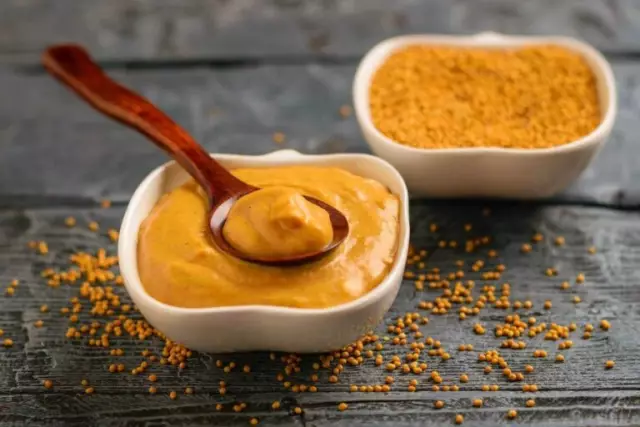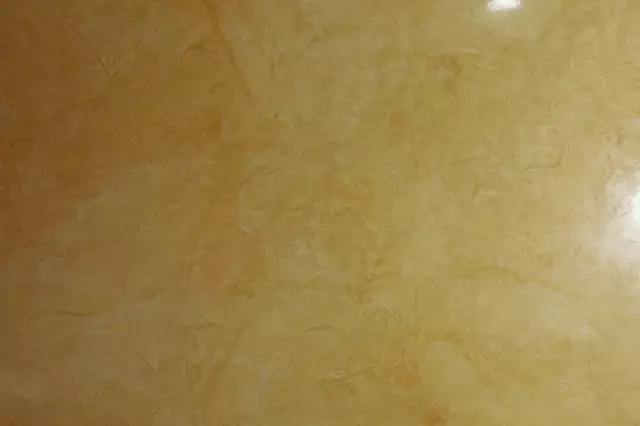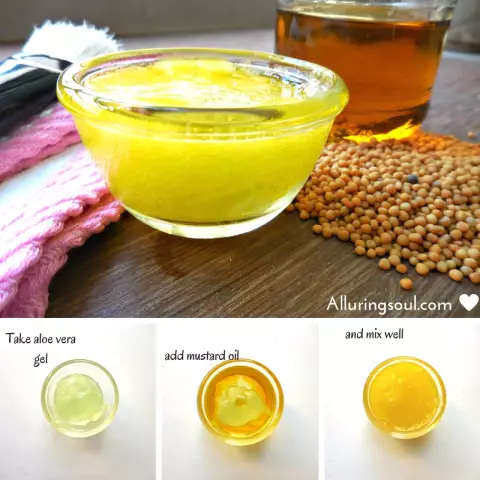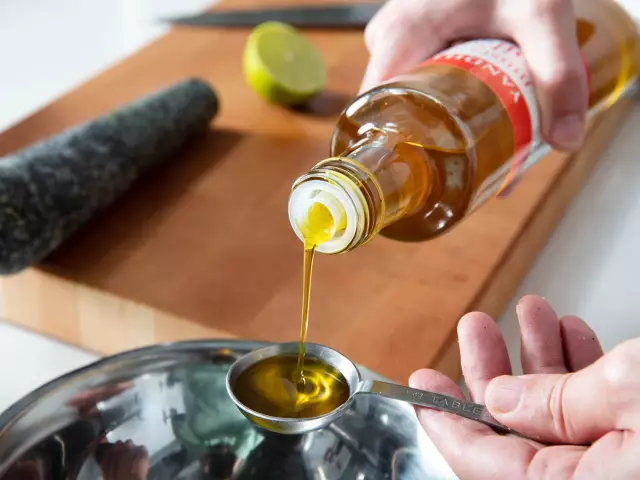- Author Rachel Wainwright [email protected].
- Public 2023-12-15 07:39.
- Last modified 2025-11-02 20:14.
Mustard plaster
Instructions for use:
- 1. Pharmacological action
- 2. Indications for use
- 3. Method of application

Mustard plaster is a preparation with a local irritating, analgesic and anti-inflammatory effect, effective for the treatment of coughs, sprains and bruises.
pharmachologic effect
The therapeutic effect of Gorchichnikov is caused by reflex reactions that occur when irritation occurs at the site of application of the drug.
Release form
Mustard plasters are of two types:
- Thick sheets of paper, 8x12.5 cm in size, covered with a thin layer of mustard mixture, consisting of cake from mustard seeds. The package contains 10 mustard plasters;
- In paper bags, 3 g of mustard mixture, divided by seams into 4 cells. 2, 5, 10, 15 or 20 mustard plasters in a package.
Indications for use Gorchichnikov
Most often, mustard plasters are used for coughing. They have proven to be very effective and inexpensive.
They are excellent for both lingering and dry coughs. Elevated (over 37.3 ° C) temperatures can be a warning.
The best time to use mustard plasters is considered the final stage of the disease, a day after the temperature has returned to normal.
Also, mustard plasters are used as an anti-inflammatory and analgesic agent for:
- Bronchitis;
- Osteochondrosis;
- Myositis;
- Myalgia;
- Neuralgia;
- Contusions of soft tissues;
- Laryngotracheitis;
- Lumboischialgia;
- Arthralgia;
- Pneumonia;
- Sprained ligaments.
Mustard plasters are contraindicated in acute conditions of respiratory diseases, asthma, hypersensitivity to the drug and neoplastic diseases.
Also, they should not be used on the skin in areas affected by neurodermatitis, psoriasis or weeping eczema.
Method of application of mustard plasters

The use of mustard plasters is external. To do this, a mustard bag with a uniformly distributed powder is immersed in warm (37 ° C) water for half a minute, and then applied to the skin. You can cover the top with plastic wrap or a warm blanket to enhance the effect. Mustard plasters are not removed until persistent redness appears, usually from 5 to 10 minutes. After removal, the skin area is washed with water.
An important condition for effective treatment with Mustard plasters is the correctly chosen place of application:
- For bronchitis, pleurisy, colds and pneumonia - on the back (from 5 to 8 pieces). The area of the heart should be avoided;
- When a cold starts - to the soles;
- With migraines (hypertension) - on the back of the head;
- With neuralgia, myositis, sprains - directly to the painful place;
- With angina pectoris - on the chest to the heart.
For children, mustard plasters are placed very carefully so as not to cause skin burns. They are placed on a gauze folded in half, previously soaked in warm water. The average time of the procedure is 10 minutes, but if the child complains of a strong burning sensation, then the time can be reduced to 5-7 minutes. It is best to put mustard plasters for children in the evening, so that the child has time to cough up the mucus before going to bed.
Before using Mustard plasters during pregnancy, you should consult a doctor, independent use of Mustard plasters during pregnancy is not recommended.
You can buy the drug without a doctor's prescription. The shelf life is from 1 to 2 years, depending on the manufacturer.
Information about the drug is generalized, provided for informational purposes only and does not replace the official instructions. Self-medication is hazardous to health!






